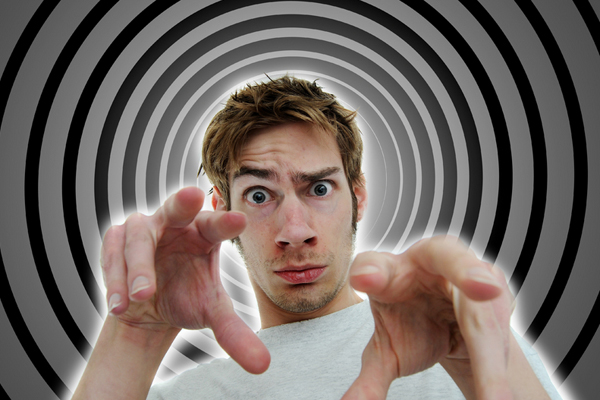How Does Hypnosis Work?

During the 1700s, Franz Mesmer, a German physician famous for "mesmerizing" his patients, was booted from town after town as a charlatan. The locals believed his technique for putting subjects in a trance-like state, using the power of suggestion, was trickery.
Today, though, Mesmer is vindicated: Extensive research has shown that hypnosis is not in fact a trick, and hypnotists are now respected members of the psychology community.
The vast majority of people are at least slightly "hypnotizable," as measured by the Stanford Hypnotic Susceptibility Scales. The scales, developed by psychologists at Stanford University, rate people from 0 to 12 based on their responsiveness to the suggestions of hypnotists.
Only 5 percent of people receive the zero score on the Stanford scales by responding to none of the hypnotic suggestions made to them. Another small subset receives the maximum score, 12, by responding to all of them: A person in this group is so hypnotizable that he'll fail to register the stench of ammonia placed under his nose after the hypnotist instructs him to shut off his sense of smell.
Most people fall solidly in the 5 to 7 range on the Stanford scales. And as with IQ scores, people maintain about the same hypnotic susceptibility rating throughout their adult lives. This and the fact that identical twins often receive the same rating suggests that hypnotizability is an inherent and hereditary property of the human psyche.
Stage hypnosis vs. hypnotherapy
Today that property is primarily utilized in two ways: for "stage hypnosis," in which hypnotists wow audiences by inducing volunteers into trances and then making them perform ridiculous tasks such as clucking like chickens, and for a well-respected treatment called hypnotherapy.
Sign up for the Live Science daily newsletter now
Get the world’s most fascinating discoveries delivered straight to your inbox.
Deirdre Barrett, a hypnotherapist at the Harvard Medical School, has written extensively about her methods of inducing hypnosis. She begins with a carefully crafted series of suggestions (for example, "Let your breathing become slow and deep; let all tension flow out of you...") that result in a state of deep calm.
"A hypnotic trance is not therapeutic in and of itself," Barrett wrote in Psychology Today, "but specific suggestions and images fed to clients in a trance can profoundly alter their behavior."
To name but two examples, Barrett has used hypnotherapy to help her patients lose weight and quit smoking . Oncologists at the Mount Sinai School of Medicine have even used the method to ease the healing process for breast cancer patients after surgery.
How does hypnosis work?
As with many brain phenomena, scientists don't know exactly how or why hypnotism works, but they're getting closer to the answer thanks to recent EEG scans of hypnotized brains. Dr. Mark Jensen, a psychologist at the University of Washington School of Medicine, found that hypnosis and meditation have similar neurophysiological profiles.
"During both, fast-wave brain activity, which correlates to thinking and processing, decreases, while slow-wave activity exhibited during both relaxation and focus increases," Jensen told Life's Little Mysteries.
Jensen prescribes hypnosis for chronic pain treatment, and has scanned his patients' brains during sessions. "All pain is processed in the head," he explained. "First it's registered in the sensory cortex, but then the prefrontal cortex gives it meaning, and panic and stress as a result of the pain occur in the thalamus and other parts.
"During hypnosis, you can ask people to imagine that the sensation that usually induces extreme pain is minor that it isn't bothersome and you immediately see a decrease in activity in the prefrontal cortex and those other parts. In other words, my patients change the meaning that their brains give to the pain."
Roughly 80 percent of Jensen's patients report a marked decrease in pain during hypnosis sessions; for 50 percent, the decrease lasts hours afterward. By practicing meditation by themselves, many patients learn to treat their own pain automatically.
Got a question? Send us an emailThis e-mail address is being protected from spambots. You need JavaScript enabled to view it and we'll crack itThis e-mail address is being protected from spambots. You need JavaScript enabled to view it . Follow Natalie Wolchover on Twitter @nattyover
Natalie Wolchover was a staff writer for Live Science from 2010 to 2012 and is currently a senior physics writer and editor for Quanta Magazine. She holds a bachelor's degree in physics from Tufts University and has studied physics at the University of California, Berkeley. Along with the staff of Quanta, Wolchover won the 2022 Pulitzer Prize for explanatory writing for her work on the building of the James Webb Space Telescope. Her work has also appeared in the The Best American Science and Nature Writing and The Best Writing on Mathematics, Nature, The New Yorker and Popular Science. She was the 2016 winner of the Evert Clark/Seth Payne Award, an annual prize for young science journalists, as well as the winner of the 2017 Science Communication Award for the American Institute of Physics.










